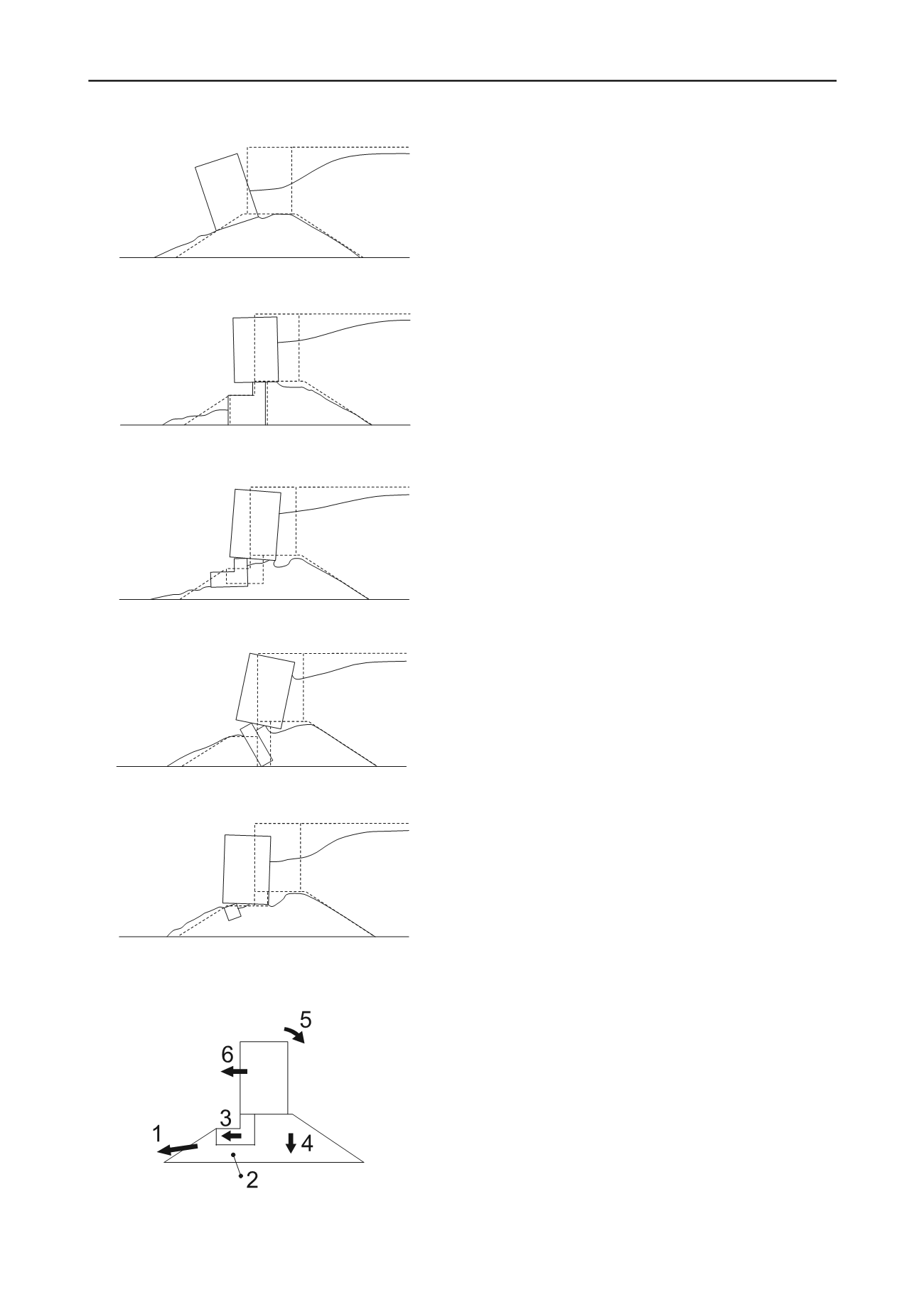
2058
Proceedings of the 18
th
International Conference on Soil Mechanics and Geotechnical Engineering, Paris 2013
without blocks (500Gal)
The caisson with Type 1 blocks had small backward
inclining after 500Gal shaking as shown in Figure 11, and was
displaced seaward over the block by 800Gal shaking (see Figure
10). After the tests, the tilt angle of the caisson returned to about
zero degree. The caisson with Type 2 blocks had backward
inclining after 500Gal, the same as the caisson with Type 1
blocks; however, during 800Gal shaking, the blocks moved
seaward together with the caisson and the backward inclination
of the caisson remained (see Figure 12).
In the case of the model with Type 3 blocks, the blocks
leaned seaward, and the caisson had significantly large
backward inclining after 500Gal shaking. One of the causes of
this result could be the lack of stability of the blocks. The
inherent stability of the blocks would be an important factor of
the new improvement method.
Type 1 (800Gal)
Type 2 (800Gal)
Type 3 (500Gal)
Based on the final deformation shown in Figure 12 and the
results of measurement mentioned above (especially from the
observed displacement), it could be said that six factors affected
the behavior of the improved quay wall: (1) collapse of foreside
slope rubble mound, (2) dimensions of solidified area and
ground condition beneath solidified area, (3) displacement of
solidified area, (4) settlement of rubble mound and differential
settlement between solidified area and rubble mound, (5)
leaning of caisson, and (6) displacement of caisson. The
numbers correspond to those indicated in Figure 13. These
factors correlated strongly with each other, making it was
difficult to clarify which was the dominant factor on the
behavior of quay walls.
5. CONCLUSION
A series of shaking table tests were conducted to study the
seismic behavior of caisson-type quay walls improved by the
new method. It was derived from the results of the model tests
that six factors affected the behavior of the caisson-type quay
walls improved by the new method. Further study will be
continued to evaluate the effect of each factor, and the design
methodology of the new-type quay walls will be discussed base
on the results.
6. ACKNOWLEDGEMENTS
This work was supported by the Kanto Regional Development
Bureau, Ministry of Land, Infrastructure, Transport and
Tourism in Japan, and was a part of cooperative research
between the Port and Airport Research Institute and the Japan
Dredging and Reclamation Engineering Association. The
authors greatly appreciate their contribution.
7. REFERENCES
Type 4 (500Gal)
The Overseas Coastal Area Development Insitute of Japan. 2009.
Technical standards and commentaries for port and harbour
facilities in Japan
. OCDI, Tokyo.
Figure 12. Deformation of the quay wall models after the tests.
Figure 13. Factors affected the behavior of the improved quay walls.


